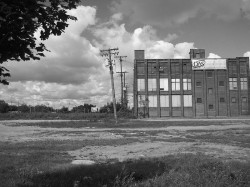 How soon will it be before people finally start using the term “depression” to describe what has happened to the U.S. housing market? It has been four and a half years since housing prices began to decline, and they are still falling. In fact, U.S. housing prices have now fallen further during this economic downturn than they did during the Great Depression of the 1930s. Just think about that. We are now in unprecedented territory, and most analysts believe that U.S. house prices will continue to decline in 2011. Mortgage rates have been moving up, mortgage delinquencies are on the rise again, U.S. mortgage lenders have really tightened lending standards and “foreclosuregate” continues to plague the entire mortgage industry. It would be really nice for the overall economy if house prices did go up in 2011, but right now it looks like that simply is not going to happen.
How soon will it be before people finally start using the term “depression” to describe what has happened to the U.S. housing market? It has been four and a half years since housing prices began to decline, and they are still falling. In fact, U.S. housing prices have now fallen further during this economic downturn than they did during the Great Depression of the 1930s. Just think about that. We are now in unprecedented territory, and most analysts believe that U.S. house prices will continue to decline in 2011. Mortgage rates have been moving up, mortgage delinquencies are on the rise again, U.S. mortgage lenders have really tightened lending standards and “foreclosuregate” continues to plague the entire mortgage industry. It would be really nice for the overall economy if house prices did go up in 2011, but right now it looks like that simply is not going to happen.
For many U.S. homeowners, all of this is absolutely sickening. Millions of homeowners are stuck in houses that they desperately want to sell, but they don’t want to take huge losses on their investments either.
Millions of other U.S. homeowners are stuck paying on mortgages that are for far, far more than their homes are now worth.
Could you imagine paying $400,000 for a home that is now only worth $200,000?
Unfortunately, U.S. house prices just continue to decline.
According to CoreLogic, U.S. house prices have fallen for four months in a row, and in November (the last month CoreLogic has released numbers for) housing prices actually fell 5.1% on a year-over-year basis.
Sadly, house prices have dropped so much at this point that we have entered truly historic territory.
According to Zillow, U.S. housing prices have declined a whopping 26 percent since their peak in June 2006. Amazingly, this is even farther than house prices fell during the Great Depression. From 1928 to 1933, U.S. housing prices only fell 25.9 percent. A brand new record has now been established.
So have we hit bottom yet?
Will house prices recover in 2011?
Unfortunately, every indication seems to point to even more declines in U.S. home prices. The following are five key factors that will continue to drive house prices down….
#1 Mortgage Rates Are Going Up
Over the past couple of months, mortgage rates in the United States have been moving up fairly steadily. That is going to make mortgages even more expensive for potential home buyers.
#2 Mortgage Delinquencies Are Increasing Again
As we approached the end of 2010, the number of mortgages in the U.S. that are “seriously delinquent” started to creep up once again. That means that we are likely to see another bump in foreclosures at some point in 2011. There are already way, way too many homes on the market, so more foreclosures will only add even more supply to a market that already has way too many homes for sale.
#3 Mortgage Lenders Have Really Tightened Standards
Most large financial institutions have responded to the mistakes of the past decade by really, really tightening mortgage standards. It is now much harder to get a home loan in the United States. But if less people can qualify for a mortgage that means that less people will be out there buying homes.
#4 The Entire Mortgage Industry Continues To Be Mired In Legal Problems
Foreclosuregate is a huge story that simply refuses to go away. For example, just the other day the highest court in Massachusetts voided the seizure of two homes after the big banks involved failed to prove that they actually held the mortgages at the time they foreclosed. This case made headlines all over the nation, and precedents such as this will encourage even more homeowners to challenge their foreclosures in court. This is going to be really bad for the big mortgage lenders and it is going to really slow down the pace of mortgage lending.
#5 The Underlying Economy Continues To Be Very Poor
The American people cannot afford to buy good homes if they do not have good jobs. But today there are seven million fewer middle class jobs than there were about ten years ago. As 2007 began, there were just over 1 million Americans that had been unemployed for half a year or longer. Today, there are over 6 million Americans that have been unemployed for half a year or longer. Until there is a “jobs recovery” there simply is not going to be a “housing recovery”.
There are very few top economists that are actually optimistic about the U.S. housing market in 2011. In fact, there seems to be an emerging consensus among analysts that house prices in America are going to decline quite substantially this year….
*Mark Zandi of Moody’s Analytics says that U.S. house prices are “double dipping” and that we will likely see another 5 percent decline in housing prices during 2011.
*Economist Nouriel Roubini recently declared to CNBC that the “double-dip” for the U.S. housing market has already arrived….
“It’s pretty clear the housing market has already double dipped.”
*Standard & Poor’s analysts are projecting that U.S. home prices will fall another seven to ten percent during 2011.
*Zillow chief economist Stan Humphries expects home prices to continue to fall until at least mid-2011 and he is convinced that more hard times for the U.S. real estate market are still to come….
“Zillow believes that we’ll see bottom in national home values in Q2 or Q3 of 2011 (more likely the latter), that home values will fall another 5-7% nationally (in the Zillow Home Value Index) between now and then, and that we’ll experience a very long, protracted bottom before home value appreciation returns to historically normal rates.“
So it looks like the U.S. housing crash is going to continue for a while.
For those that make a living by building or selling homes, this has got to be very depressing news.
But for those that are seeking to buy a house or that are seeking to buy some land, there could potentially be some very good deals out there over the next year or two.
So what do you think is going to happen to house prices in 2011? Please feel free to leave a comment with your analysis….
